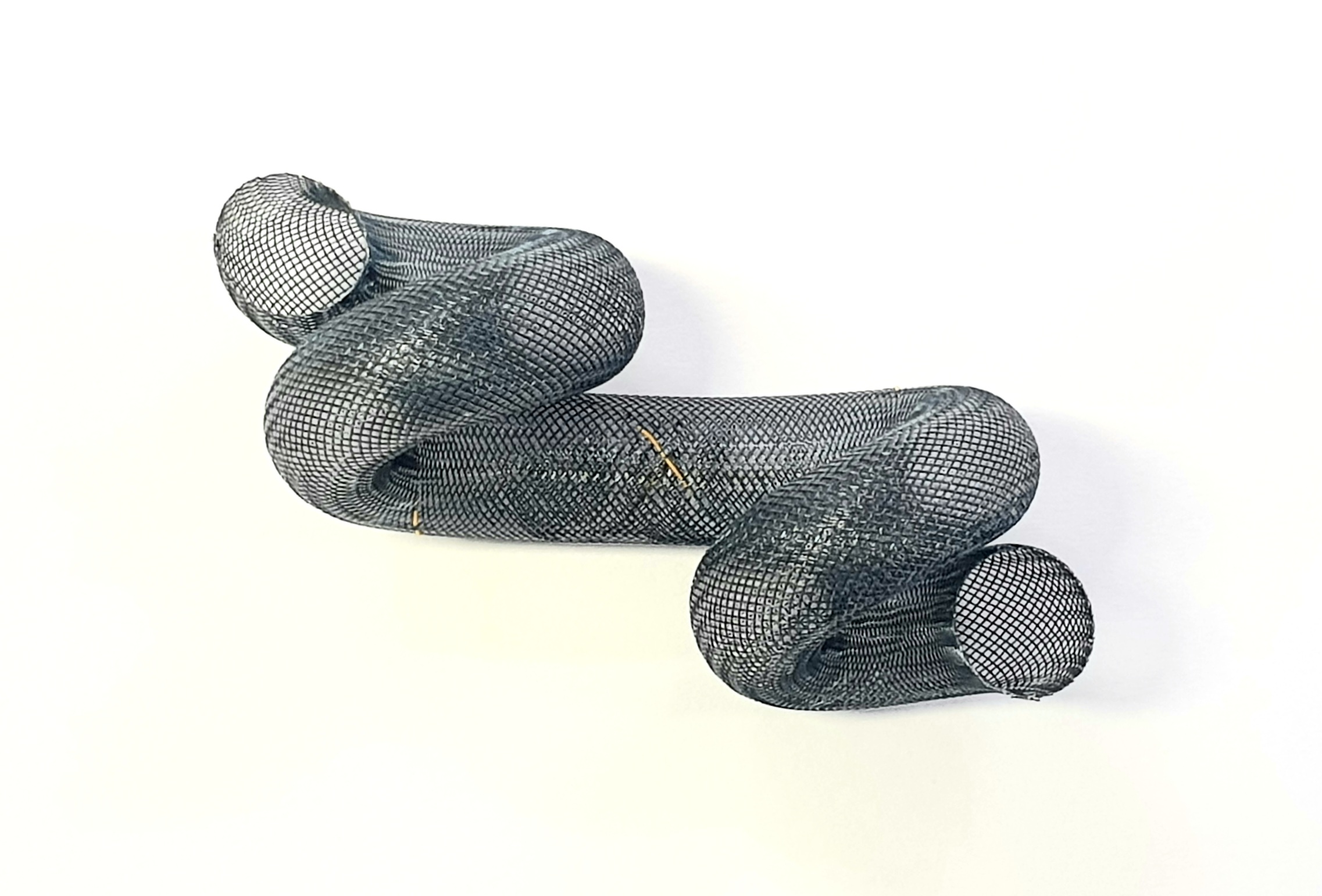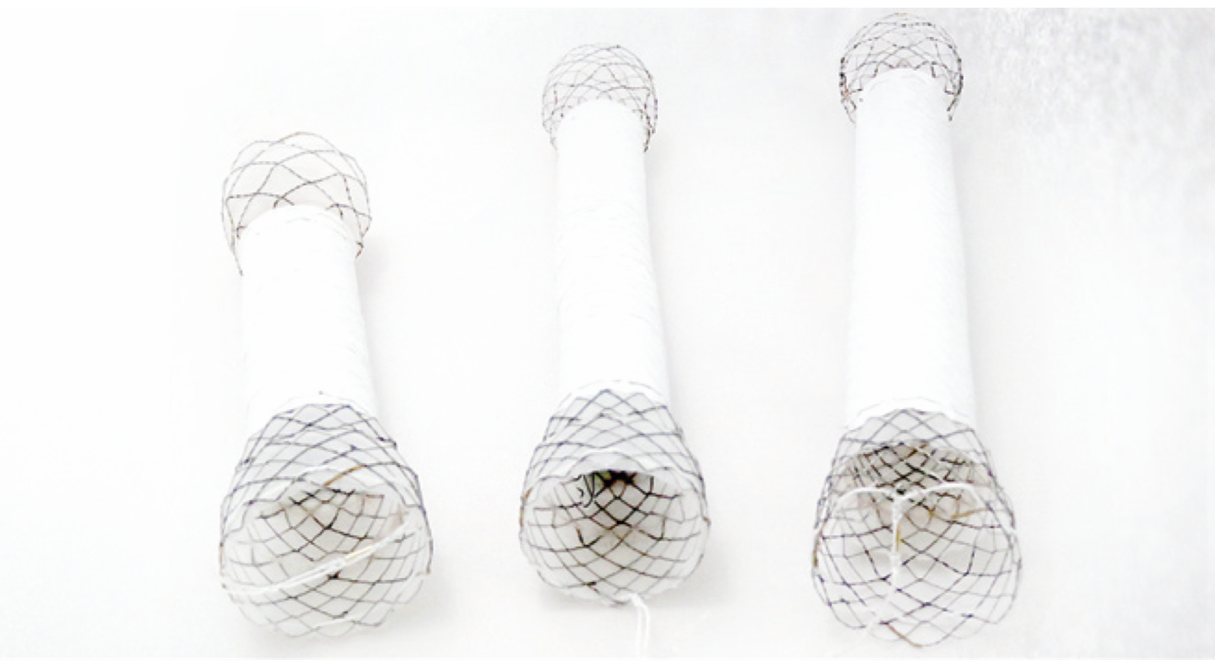About
EGIS STENT

NiTi Wire
A new type of stent was invented using a Nitinol wire. The hoop strength of the new stent was found to be 2 times larger than that of the Cragg or Memotherm stents. However, the longitudinal flexibility of the new stent was inferior to both the Cragg and Memotherm stents. This new stent seems to be useful or the treatment of stenosis with straight configuration, but need to be improved or use in tortuous stenotic region. The stent was applied to the patients with esophargeal stenosis and showed a good result. (The Korean Society of Medical and Biological Engineering 1997 : 11 ; 343)

covered membrane
Abstract
Purpose: To study fluoroscopic placement of covered expandable stent tubes in patients with esophagogastric strictures.
Materials and methods: Under fluoroscopic guidance, 132 stent tubes were placed in 116 patients with malignant neoplasm; four, in three patients with benign lesions. All patients had aphagia or dysphagia to soft food or liquid.
Results: After placement (successful in 100% of cases), 93 (78%) of the patients could ingest solid food; 24 (20%), soft food. Complications in the 119 patients included blockage in 13, stent tube migration in 12, gastroesophageal reflux in nine, severe pain in nine, and delayed massive bleeding in four. Most major complications were managed by means of a balloon catheter, a second stent tube, or analgesics. One hundred four patients died 2-80 weeks after stent placement.
Conclusion: Treatment with placement of a covered expandable stent tube is effective in most patients with dysphagia due to malignant esophogastric strictures and is less effective in patients with benign strictures. (Radiology 1994:193(3):689.

stent retrieval
PURPOSE: To investigate the safety and clinical effectiveness of covered retrievable expandable nitinol stents in 25 patients with a benign esophageal stricture.
MATERIALS AND METHODS: Under fluoroscopic guidance, covered retrievable expandable nitinol stents were placed in 25 patients with a benign esophageal stricture and were removed with a retrieval hook 1–8 weeks later.
RESULTS: Stent placement was successful in all patients, with no procedural complications. After stent placement, all patients could ingest solid food. The stents were successfully removed from all but two patients. One patient passed the stent via the rectum, and the other regurgitated a high cervical stent. After stent removal, one patient developed a small esophagobronchial fistula, which spontaneously sealed within 1 week of stent removal. After stent removal or migration, all patients could ingest solid food. During follow-up (mean, 13 months; range, 2–25 months) after stent removal or migration, 12 patients maintained their improvement in dysphagia and needed no further treatment. Thirteen patients with recurrence were treated by means of repeat balloon dilation.
CONCLUSION: Use of retrievable expandable nitinol stents seems to be a safe and effective method of treatment in selected patients with benign esophageal strictures.(Vascular and Interventional Radiology, 2000;217(2)
Double Bare Stent
Bare Metal Stent
Double Covered Stent
Distal CBD and Hilar
Flower Stent
Reduce Complications
Wide Stent
Larger Diamter for CBD
Single F Stent
Reduce Complications
Full Cover with Valve
Transpapillary Position
Flared Full Cover
Distal CBD
Tornado Stent
Lumen Apposition
